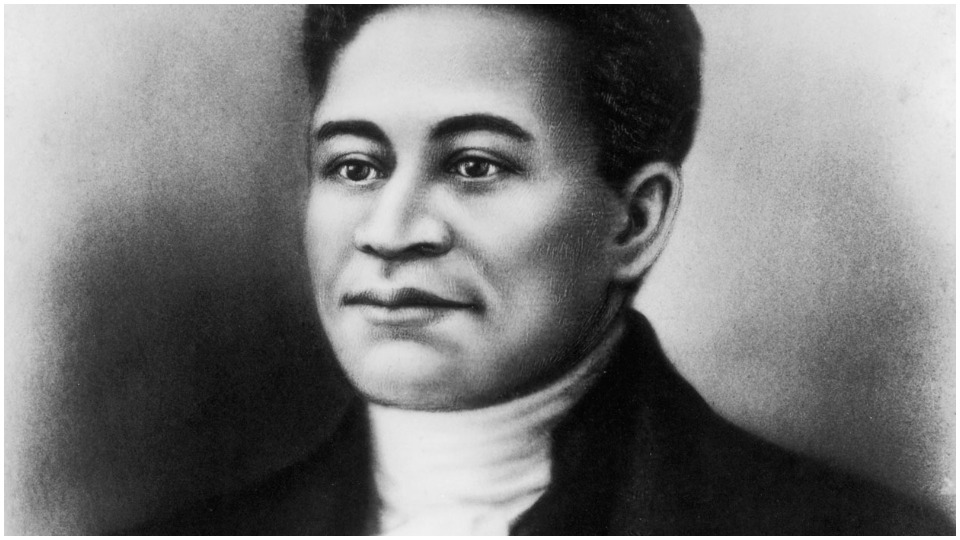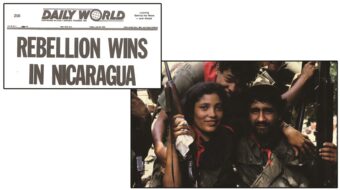
Note from the author:
Independence Day can be seen as a controversial holiday. It celebrates the early U.S. colonies throwing off the chains of the British monarchy. It brings about conflicting feelings given that the enslavement of Black people and the genocide of Native Americans was carried out over a very long period of U.S. history.
One could argue that Black and brown people and Native Americans have no reason to acknowledge July 4 due to this history. This would be a limiting view.
In telling the story of Crispus Attucks we show how multifaceted history can be. Attucks, a man of Black and Indigenous descent who escaped slavery, led in sparking what could be described as part one of the American revolution. Dismantling the power of the reactionary British monarch moved the country along to later do away with the U.S. slaveholder class and the exploitation of enslaved Black labor. The victory in the Civil War, the “second American revolution,” paved the way for the later epic struggles for civil rights. The Civil War was part two of the American Revolution, but it would not have been possible without part one.
It is a fact that the enslavement of Black people helped form the building blocks of capitalism and the world economy of today. It is a fact that Native American people are the victims of genocide in this buildup of capitalism in the U.S. It is a fact that many millions of people of color have and are being victimized. It is also a fact that millions of white workers have suffered and died during this process. The beautiful thing, however, is that there is ongoing now an uprising against the police violence and the systemic racism that has bolstered the oppression of all these groups and the people involved in the uprising are folks who are part of a great big beautiful multi-racial, multi-national working class and their allies. This is cause to celebrate this July 4.
We reprint the following story that I wrote last year because it shows the key role of a Black man who had a Native mother, Crispus Attucks, in the fight for liberation and democracy since the very inception of that fight.
We see this today as activists of the Black Lives Matter movement make their voices heard regarding the continued systemic racism in the country. All of these events are connected because no moment in history exists in a vacuum. Independence Day was the first step of the United States beginning a path to embody its full potential. We fight for that potential today – potential that doesn’t rely on the exploitation of working people and the oppression of the marginalized. The road to that potential has been a long one and will continue to be a tough one, but it is one worth fighting for all the same.
– Chauncey K. Robinson
“The story of the Negro in America is the story of America—or, more precisely, it is the story of Americans. It is not a very pretty story: the story of a people is never very pretty.” – James Baldwin
The American Revolutionary War of 1776 led to the thirteen British colonies that later became the United States gaining their independence from the world’s biggest and most powerful empire. Today, we celebrate the launch of that revolution as Independence Day. The Boston Massacre, in which British soldiers shot and killed several people in 1770, is recorded as one of the incidents that helped accelerate the colonists’ drive to revolt. What is not often taught in schools, or popularized in mainstream culture, is the fact that a Black man was the first to die for the independence of this nation. That man was Crispus Attucks—the first person killed in the American Revolution.
Attucks was born in Framingham, Mass., to an enslaved Black man named Prince Yonger and a Native American woman named Nancy Attucks. Crispus escaped from enslavement around 1750 and eventually became a sailor, spending much of his life at sea or working the docks along the Atlantic seaboard.
Tensions between the U.S. colonies and the British Empire had been mounting for some time. The colonists tired of being used as simply producers of raw materials, a captive market for the goods of Britain’s factories, and a pawn in imperialist rivalries with Britain and Spain. Significant sections of the rising capitalist and landowner classes in British North America wanted to escape the control of the monarchy.
The colonists had begun organizing under the slogan “no taxation without representation,” believing that, as they were not directly represented in British Parliament, any laws it passed affecting the colonies (such as the Stamp Act and the Sugar Act) were illegal and unjust.
Boston, a shipping town, was the center of resistance to taxation by the British Parliament. On March 5, 1770, in Boston, a young boy complained that a British officer had failed to pay his barber bill. As tensions escalated, a small crowd of townspeople, which included Crispus, began tossing snowballs and rocks at the British soldiers stationed there. Gunshots rang out, wounding six civilians and killing another five. Attucks was the first to fall.
His death went unpunished. John Adams, who would eventually become the second U.S. president, defended the British soldiers in court. During the trial, Adams claimed that the troops were acting in self-defense. The future U.S. president called the protestors “a motley rabble of saucy boys, Negroes and molattoes, Irish Teagues and outlandish Jack Tars,” and claimed Attucks was the instigator. His argument would carry the day in court, as none of the soldiers were convicted of murder. Two received guilty verdicts on a charge of manslaughter, but their only punishment was receiving a branding on their thumbs.
The verdict emboldened the resistance to British rule. John Adams would go on to write that the “foundation of American independence was laid” on March 5, 1770. Silversmith Paul Revere’s engraving of the Boston Massacre titled the “Bloody Massacre Perpetrated in Kings Street in Boston,” would become what historians eventually called “the most effective piece of war propaganda in American history.”
Revere’s work, still famous today, left out Attucks, though. Adding him back into the visual history of the Boston Massacre fell to W.L Champney almost a century later, in 1856. Two years later, in an 1858 commemoration of the Boston Massacre, American abolitionist Wendell Phillips stated:
“I place this Crispus Attucks in the forefront ranks of the men that dared. When we talk of courage, he rises with his dark face, in his clothes of the laborer, his head uncovered, his arm raised above him defying bayonets; and when the proper symbols are placed around the base of the statue of Washington, one corner will be filled by the colored man defying the British muskets.”
The American Revolution that Attucks helped launch would be described by V.I. Lenin as “one of those great, really liberating, really revolutionary wars.” It encouraged the French Revolution and inspired revolutionaries throughout the Western hemisphere to overthrow Spanish colonialism and establish republics.

But it would take a “second American revolution”—the Civil War—to break the U.S. slaveholder class, so many of whose members had been among the leaders of the 1776 fight. And even that second revolution didn’t create anything approaching equal rights for former slaves. Sharecropping, Jim Crow, economic oppression, and political disenfranchisement served as a superstructure for a racist dictatorship in the South that kept workers of all races divided.
The enslavement of Black people was one of the key building blocks of U.S. capitalism and the world economy of today. But when thinking of the contribution that Black people have made to the advance of democracy in this nation, and the world, the picture must be expanded to include a variety of roles. Attucks’ death was the opening act in a struggle that led to the U.S. gaining independence at a time when Black people were seen as property and eventually only three-fifths of a human being.
Attucks escaped slavery and attempted to make a space for himself in a land that was hostile to his very existence as a free person. This is still the case for many Black people, and other people of color, in the country today. His story can be seen as symbolic of the history of the United States—a history filled with contradictions, victories, losses, oppression, and the constant struggle for progress. American novelist and activist James Baldwin once said the history of a people is never a pretty one. This is true, but it is our truth, and by acknowledging the entire picture—the troubles and triumphs—we can perhaps build a future of true democracy for all peoples.
Like free stuff? So do we. Here at People’s World, we believe strongly in the mission of keeping the labor and democratic movements informed so they are prepared for the struggle. But we need your help. While our content is free for readers (something we are proud of) it takes money — a lot of it — to produce and cover the stories you see in our pages. Only you, our readers and supporters, can keep us going. Only you can make sure we keep the news that matters free of paywalls and advertisements. If you enjoy reading People’s World and the stories we bring you, support our work by becoming a $5 monthly sustainer today.












Comments